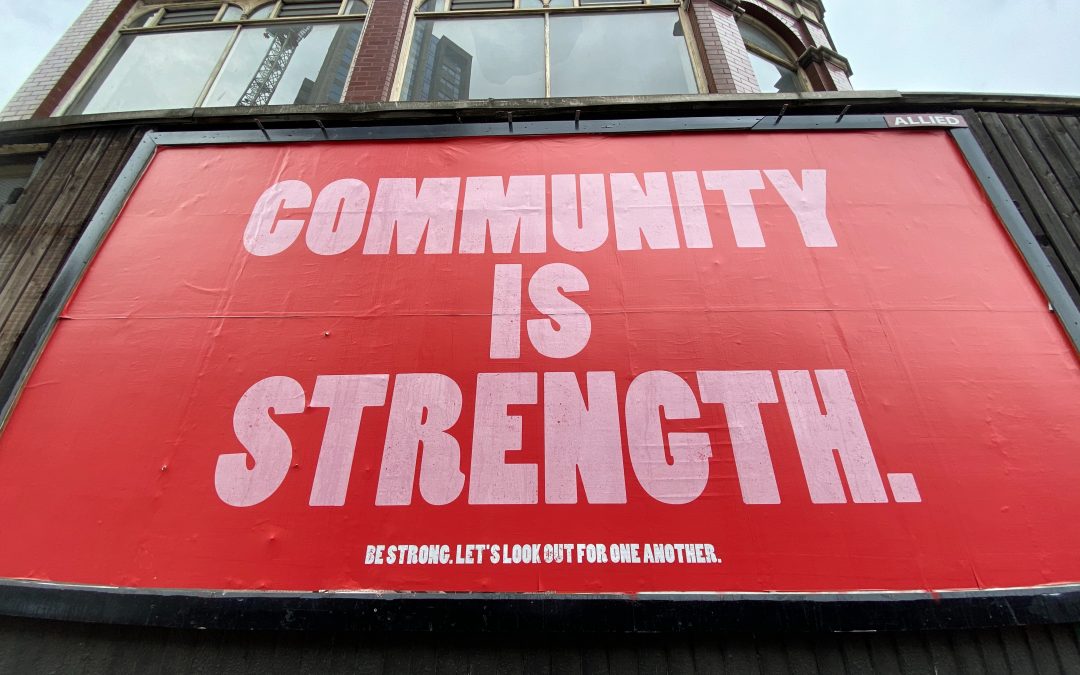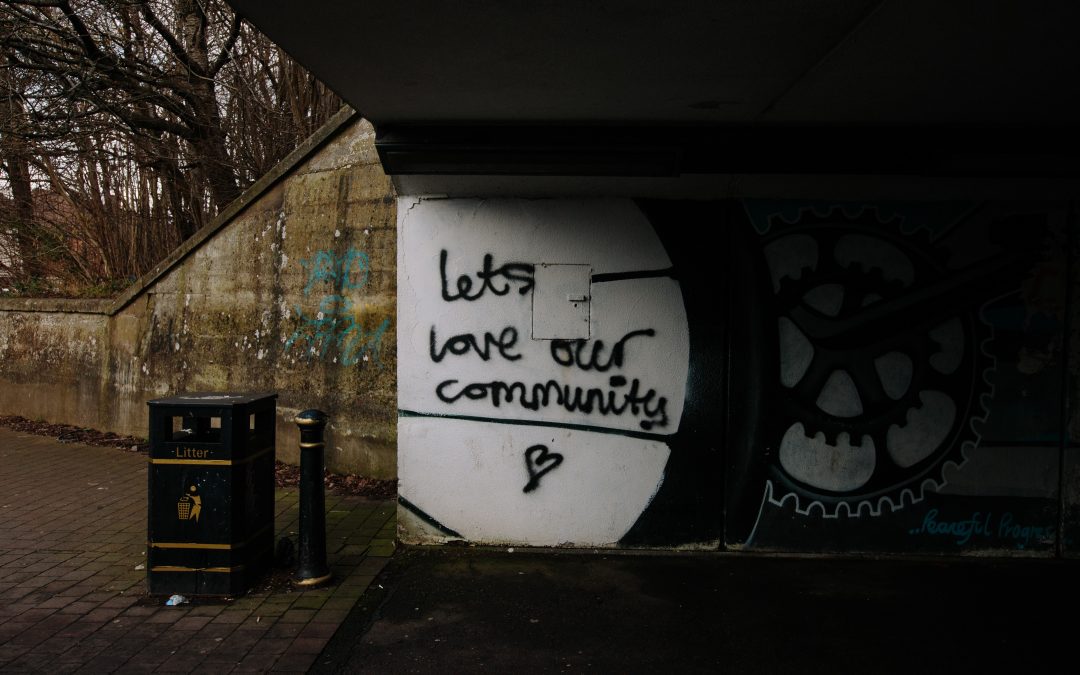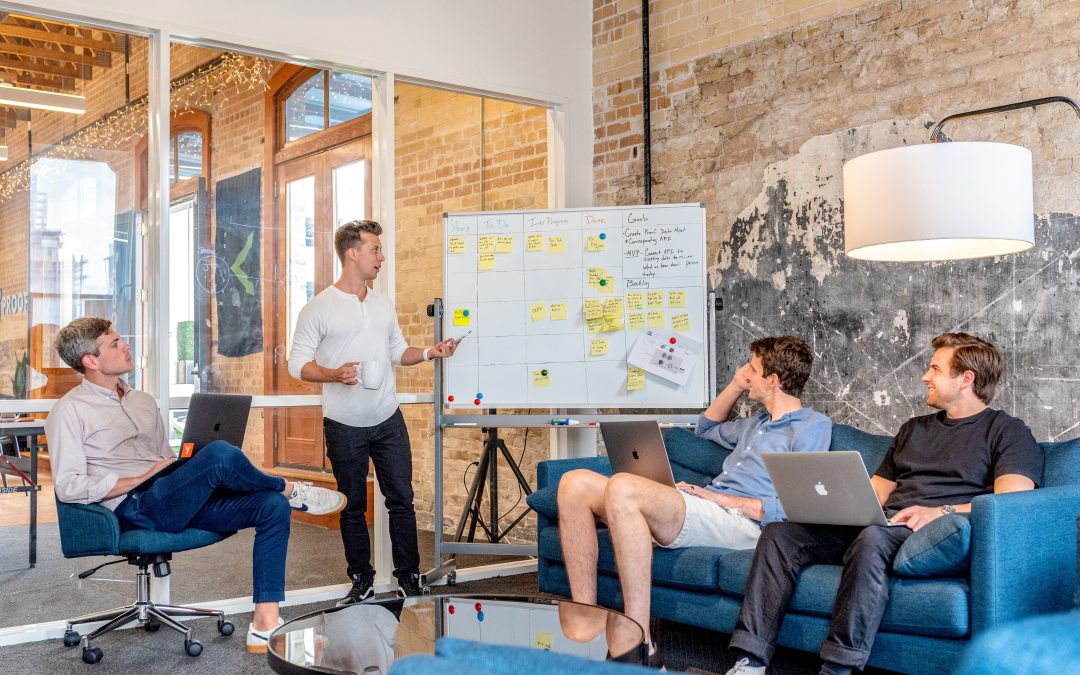
FossCamp. UDS. Winner.
What an exciting week of events ahead!
Firstly, I will be attending [FossCamp](https://fosscamp.org/) from the *5th – 6th December*. There a variety of upstreams meet together in a number of free form sessions to discuss anything and everything about how we work together. Everyone is welcome, so if you can pop along to the Google offices at *1400 Crittenden Lane, Mountain View, CA 94043* do come and say hello. 🙂
Next up, and taking place at the same venue all next week (8th – 12th December) will be our [Ubuntu Developer Summit](https://wiki.ubuntu.com/UDSJaunty). Over 200 of us will be gathering together to design, discuss and plan our next version of Ubuntu: version 9.04, the Jaunty Jackalope.
UDS is always the highlight of my travel calendar. Five days of sessions spread across seven tracks, every day chock full of brainstorming sessions on a range of topics and planning their implementation. Each track focuses on different elements of the Ubuntu platform and community, and I run the rather unsurprisingly titled *Community Track*. In our track we will be discussing all manner of governance, process, initiative, collaboration and participation issues. The track will touch on a variety of aspects of our community including MOTU, LoCo Teams, Hall Of Fame, Harvest, Councils, Upstreams, ubuntu.com and more. It is going to be an exhilarating week of discussion; I am chomping at the bit to get started.
But UDS is way more than just sessions. It is about people. UDS brings together a fascinating, inspiring and indelibly social group. There is a fantastic atmosphere at UDS and a very real sense of community. We work hard to try and make UDS feel as welcoming and open to ideas and discussion as we can. It is an opportunity to re-affiirm old friendships and make new ones. Every day we not only work hard together, but we play hard too. Anyone who has been to a UDS will be well aware of just how physically draining it can be: long days full of discussion and long evenings of socialising make for a pretty tiring week. I think my coffee intake increases as the week progresses. 🙂
I am particularly excited about this UDS. I am not only excited at the group who we know are coming (many of which we sponsored), but I think Jaunty offers so much opportunity across all Ubuntu editions. This is going to be an important release in the Ubuntu story. Everyone is welcome to be a part of it, and everyone is welcome at UDS. 🙂
See you there folks!

Leap Around Your Living Room
I have utter, unparalleled love and adulation for the song *Braindead* by [Exodus](https://en.wikipedia.org/wiki/Exodus_(band)). The intro that song makes me want to jump around the room. It is the pure, unfiltered essence of thrash metal.
The [album version](https://www.last.fm/music/Exodus/_/Brain+Dead) is stunning, but I really love the insane live version on [Good Friendly Violent Fun](https://www.last.fm/music/Exodus/Good+Friendly+Violent+Fun). You can just hear the intensity of that performance coming through. Magic.
Any other recommendations for music to leap around your living room to?

Sneaky Education And The Desktop
When I was a kid, I owned a [Sega Megadrive](https://en.wikipedia.org/wiki/Sega_Genesis) (Sega Genesis for my American friends). I spent hours on that thing. Sonic The Hedgehog. Streets Of Rage. Desert Strike. Toejam And Earl. I loved it.
One game that was released was [Where In The World Is Carmen Sandiego?](https://en.wikipedia.org/wiki/Carmen_Sandiego) Back then it was marketed as *edutainment*: essentially a sneaky way for parents to infiltrate their kid’s leisure time with learning under the premise of it being “fun”. Of course, kids are smarter than parents give them credit for. Kids were wise to this and often avoided games like that like the plague. The mind of a 12 year-old concluded that enough time is spent in front of teachers, workbooks and exams without it invading precious Sega time. I was one such kid. I *hated* the idea of edutainment. I didnt want to learn with my Megadrive, I wanted to shoot things with very large, very loud, deeply pixelated guns.
Things change when you grow up (yes, I have grown up, smart arses). I now love learning. I love reading. I spend hours drowning in Wikipedia and exploring our world, our history and our patchwork of cultures. I love learning about people’s experiences, perspectives and attitudes. I no longer have the 12 year-old mentality that learning is for school time. Learning really is genuinely *fun*.
Naturally, there are some subjects I like to learn about in more detail. Community (zing!). Computers. Free Software. Free Culture. Music. There are however some subjects that I develop a curiosity about and feel an urge to investigate. These subjects are not part of my daily interests and hobbies, but are temporary avenues of curiosity.
One recent example for me is *Historical Jesus*. A few days ago I read everything Wikipedia had to offer about about the subject. This was triggered originally by a history TV show which in turn inspired me to buy a book about significant events in human history. In this book I read about Jesus’s Crucifixion and decided to further refresh my knowledge of the subject by hitting up Wikipedia. In this example we see two distinctive concepts: *Passive Education* and *Content Aggregation and Linking*:
* *Passive Education* – in my example of Historical Jesus, my primary focus was gathering the facts and the story. I was happy for this subject’s learning to be passive. I was happy to merely consume the content and not interact with it much more than selecting what to learn.
* *Content Aggregation and Linking* – learning has links and connections. I first watched a show about history. This intrigued me to buy the book on historical events. A section in that book inspired me to access specific content on Wikipedia. The thread that connected these different resources together was the subject of Historical Jesus and I aggregated the different pieces of knowledge together in my brain. My current knowledge of Historical Jesus draws from these different resources.
When we learn about our primary interests, learning is different. Our desire is often for *Active Learning*. We not only want to know the subject, but we want to immerse ourselves in the execution and debate of it too. Much of this is not only collating general knowledge, as I did with Historical Jesus, but learning about more localised information too. When I learn about music, I want to know about local bands. I want to know when my favourite bands are coming to my area. I want to hear about music groups, gigs, and conventions near to me. I want to know about special offers in local music stores. In a nutshell, I don’t just want to consume, I want to *participate*.
In recent years, computers and the Internet have made both Active and Passive Learning incredibly accessible. The web has bolstered passive learning resources, and active learning has been thrusted towards us with online communities, social networking, community groups and discussion boards. No matter what you want to know about, the Internet can help you in both Passive and Active ways
But lets get back to *Where In The World Is Carmen Sandiego?*. Although I could not stand the concept of *edutainment* at the time, what that game *did* do that intrigues me is that it delivered education to people automatically. The education was *associative*: topics and concepts were delivered to you as you played the game.
I find this really interesting. I find the concept of linking and associating different types of education and resources fascinating. This also holds huge opportunity for the desktop.
A great example is [Banshee](https://banshee-project.org/). For those who have been living under a rock for the last three years, Banshee is a media player. I have it open all day, delivering a fresh dose of metal to me all day long. Banshee not only plays music, but it brings many diverse music related activities together under the same roof: digital music, Internet radio, CD playing and ripping, meta-data editing etc. The Banshee bods have done a great job.
But the most interesting feature to me is its [Last.fm](https://www.last.fm/) integration. When I listen to a song (such as Hammerfall right now). The artist and track is posted to [my Last.fm account](https://www.last.fm/user/jonobacon). This in itself is not all that exciting. But what Banshee does that *is* exciting is look up the artist of my current playing song and use Last.fm to make recommendations. It delivers those recommendations to me inside Banshee itself. That is *wicked cool*. Sure, I could go and look up these recommendations on the Last.fm website, but I am unlikely to do that: Banshee does the work for me. The result is that this simple feature has helped me discover literally hundreds of new bands. Banshee linked and aggregated the data, and this resulted in better learning for this important part of my interests.
Yesterday I installed the [new 1.0.0 release of Songbird](https://getsongbird.com/). Songbird is an iTunes like Open Source media player that holds some stunning promise. They have used Mozilla technologies and GStreamer to build a cross-platform media player. I know some of the guys who work on Songbird and wanted to give it a try: I had last used an early snapshot. While I don’t want to turn this into a review (if you folks want a review, let me know and I will write one up), it ships with some interesting features that build on some of the concepts seen in Banshee. Oh, and Amarok folks, I know your media player has probably been doing all of this for years, so hold fire. 🙂
When listening to an song in Songbird, it will go and look up data for the current artist from a number of resources and bring it all together. It grabs a summary blurb, discography, members, tags and links of the artist from Last.fm, a photo slideshow from Flickr, videos from YouTube, and News from Google News. Again, I could find this information separately without ever installing Songbird, but Songbird not only aggregated this content, but it linked it to an opportunity of curiosity (what I am listening to). I might never typically go and look for more details about *Hammerfall*, but when I am listening to them, it often triggers curiosity. Songbird satisfies that curiosity before I even know I have it.
Another great feature of Songbird that builds on *active learning* is that it uses [Songkick](https://www.songkick.com/) to look up all of the artists in my playlist to see if there are concerts and shows in my area. With this feature I now have a list of all the up and coming shows for the artists I like (including all those obscure metal bands). This provides me with direct access to the local community and opportunities. That is one stunningly helpful and outrageously cool feature. My media player is stopping being a place to merely consume music, and instead becoming a place to aggregate everything there is about the music I listen to and the artists that make it.
This is an even more valuable proposition for a desktop. Just think of the range of types of media we consume and the applications that we use to consume it. Now mix this with the range of online sources of education and content we have open to us. It could be really interesting to pull together these threads into one cohesive experience. I love that Totem in Ubuntu can stream BBC content to me, but I would love it to show me some information and products about that content too. I would love Evolution to provide me with an ability to easily look up terms, acronyms and products in my emails with a single click. When I look at photos in F-Spot I want to see pricing for prints and frames to put my pictures in.
It would also be fascinating to identify the work-flow of education in a computer. From sourcing content in Wikipedia, how does it flow through text editors, communications tools, online services and publishing mediums? How can we identify these links in the chain and optimise them?
Big subject. I know. But huge potential.

jb@home Rockstars
One thing I am most proud of about [jonobacon.com](https://archivedblog.jonobacon.com/) is that there is some great discussion in the comments. It seems the most magical aspect of blogging is that no matter what I babble on about, it invariably results in some interesting discussion in the comments. Thanks to everyone who has participated over the years.
Anyway, today I was thinking that it would be nice to say *thanks!* to some of the regulars who bring so much to the discussion. To kick this off, today I would like to thank the current top three commentators by buying them a DVD or CD:
* Adam Williamson
* Vadim P.
* ethana2
Just drop me an email with what you would like (preferably with a link to Amazon) and your postal address and I will get it in the post.
I generally don’t particularly like *most-posts-wins* competitions, but these three have all contributed some great comments, many of which disagree with me, which is always healthy. 🙂 In the future I will probably hand pick people who have also brought something special to the discussions.
Anyway, thanks folks. 🙂

Governments And Free Content Policies
A nice little story for those of you who may have missed it.
Last week [Larry Lessig blogged about](https://lessig.org/blog/2008/11/and_while_were_at_it.html) how the new [change.gov](https://change.gov/) site for Obama included the following at the bottom of the page:
> CONTENT COPYRIGHT © 2008. ALL RIGHTS RESERVED
Larry pointed to [Chris Messina’s post](https://lessig.org/blog/2008/11/from_the_what_a_fantastic_idea.html) asking why a Creative Commons license was not used. When I read the post, I agreed with both of their sentiments.
Well, it seems Obama’s staff are pretty responsive: they have switched the content to a [CC-BY license](https://creativecommons.org/licenses/by/3.0/), the freest of CC licenses. [Larry has the details here](https://lessig.org/blog/2008/12/changegov_set_free.html). Gobama!
It seems that the positioning of the question regarding government content is skewed. Instead of the question being “*why should we license this content under a free license?*” it should be “*why should we NOT license this content under a free license?*”. Of course, this change in approach is a mindset change. It requires participants to adjust their expectations of the norm to be a Free Culture society as opposed to a restricted society.
To me this is the most important goal for members of the Free Culture community to seek. We have the licenses, we have publishing systems, and we have a growing catalogue of content, but what we don’t have is a change in mindset (yet). This change will happen, but it will take time and many more examples such as this one.
I used to be quite involved in (UK) government use and policy attitudes towards Free Software back when I worked at OpenAdvantage and have since stepped back from it quite a bit. I wonder what kind of policy changes and persuasions need to occur for the policy to be justification for NOT publishing free content as opposed to the current norm. Anyone have any insights into this?

Twitter. It Now Makes Sense.
At first I wondered what was the point of twitter. Today I [found it](https://twitter.com/johnleach/status/1034831782):
> **johnleach** introduced his cats to squirty cream. one was terrified of it. years of trust building, gone in one short hilarious squirt.
You are an amusing man, Mr Leach. 🙂

Money. Stability?
Something struck me yesterday, while Firefox 3 was throwing a hissy fit. Is there some kind of correlation between the amount of money invested in a project or product and instability? I know this sounds like a bit of a negative question, and I don’t mean to rag on the Firefox folks, but it seems that as more money has been pouring into Mozilla Towers, the quality has been compromised. At first I thought this was just on Linux, but it seems to be on Windows too.
This is by no means an issue specific to Mozilla though – look at Microsoft with Vista. They filled the worlds largest boot full of money and poured it into the Vista machine and…bang! Instability. The more I think about it, the more examples occur to me.
Is it money directly? Or is it really that more money means more staff employed and instead the quality failure is due to management and coordination problems? Maybe it is more users that causes the problems – more users means more needs and requirements which maybe cloud the QA process? Alternatively, do the quality problems really exist, or are our expectations higher than they were? Do we expect more of our two examples, Firefox and Vista, than we did many moons ago?
I would love to hear your thoughts and experiences on this folks. I wonder what hints we can uncover.

Housekeeping Improvements
Just a few quick jonobacon.com housekeeping notes.
Firstly, I have added a little sidebar section that displays those rock and roll readers who have posted the most comments. The ranking is over the last year. Our Top 10 is currently:
* Vadim P. (19)
* Adam Williamson (15)
* ethana2 (13)
* mrben (10)
* Tom Mann (10)
* Wolfger (9)
* Alastair (9)
* Tom (8)
* andylockran (8)
* Eugenia (8)
In the sidebar it will link to the equally rocking websites of those rocking rockstars. Rock on. Rock.
There is still all to play for. There may well be prizes. You people deserve nice things. Even you, Williamson. 😛
I have also added a few other subtle niceties on the site, go and see if you can find them. Speaking of which, if anyone wants to see any features added to make the discussions that little bit more fun and productive, do let me know.

The Flow Of Ideas
I have been thinking a lot recently about the flow of ideas in and around Open Source projects. A few days ago [I asked for feedback](https://archivedblog.jonobacon.com/?p=1424) about how we can better structure interaction ideas. The blog entry gathered some great feedback: thanks to everyone who contributed. With this work I am keen to understand the bottleneck between a well researched, well specified and documented interaction concept and its ultimate implementation. It is this contention between walled designers and walled developers that causes so many great ideas to be lost, never seeing the light of day.
Understanding and resolving this contention is important for GNOME. If we compare and contrast the KDE and GNOME approach to revitalised desktop interactions (read: KDE 4 and GNOME 3), we see two very different approaches. The KDE team discussed, designed and documented a *big picture approach*. They mapped out a design of what they wanted to see and then encouraged the community to implement said vision. And you know what, they did a damn good job. Although still a touch rough around the edges, KDE 4 is a huge achievement of defined direction and coordinated implementation.
But that approach is not the GNOME approach. GNOME is a playground for experimentation and ideas. We need to stop trying to take the KDE approach of mapping the big picture and rallying the troops to implement it. It just isnt going to work that way: we have tried to do this for the last three GUADECs and have produced relatively little.
But look at what innovation we *have* produced. Tomboy. GNOME Do. Beagle. Empathy. Abiword. The Slab. The new FUSE applet. Deskbar. Gimmie. Dashboard. F-Spot. Banshee. The list is endless. The GNOME community has a history and culture of experimenting with ideas and approaches. Some of them sink, some of them swim, but there are two important attributes in each of these ideas – they are *small, self contained units* and *code is available*. Just look at [Owen’s recent post](https://blog.fishsoup.net/2008/11/22/gnome-shell-status/) as an example. We had all read [Vincent’s post](https://www.vuntz.net/journal/2008/10/22/494-desktop-shell-from-the-user-experience-hackfest-general-overview) with interest, but when Owen showed us some code that we could check out and play with, the idea really started to develop legs. Another example is [GNOME Do](https://do.davebsd.com/). I think most of us were a bit sceptical of the idea of GNOME Do at first, but the subsequent implementation and positive reported workflow experiences has made people sit up and not only take notice of GNOME Do, but its primary interaction characteristics.
So, it is clear that the GNOME community is an incubator for lots of small experiments and ideas, some of which work well and some of which don’t. Our challenge is in how we continue to encourage the flow of ideas and how we merge the flow of successful ideas into the central body of what we call GNOME
If we decide this is the right approach, we need to not only foster an open environment that encourages experimentation, but we also need to foster an environment that encourages *useful experimentation*. We want to ensure that successful experiments can be merged easily and quickly at a technical level. One potential approach to this is to encourage uses of popular and agreed infrastructure. We have this to a degree in the project already (languages, toolkits, source control systems etc), but I suspect this will shake out naturally and we will continue to see dominant technologies such as Python, Mono and C being used, and increasingly new technologies such as Clutter and Telepathy.
For this approach to succeed we need to think carefully about the workflow of an idea moving from the functional experimentation phase to the merged phase – the technical implementation and maintenance, the politics we want to avoid, the decision making process of how we evaluate ideas etc. This is where I feel we should be focusing our debating glands. Lets flesh out these processes and encourage this environment of experimentation and exploration, Just imagine what we could achieve if we could figure out effective methods for communicating interacting concepts effectively to developers, developers hacking on small implementations of those ideas and the those ideas garnering popularity and being merged into the desktop. In many ways this is a very Free Software approach – scratch an itch, refine it with collaborative development and then merge. If we can figure out these questions together, our new GNOME could actually happen.

Ubuntu Free Culture Showcase II: This Time Its Personal
[DIGG!!](https://digg.com/linux_unix/Ubuntu_Free_Culture_Showcase_for_Ubuntu_9_04_Announced)
I am epically excited to announce our second **Ubuntu Free Culture Showcase** this time for the Ubuntu 9.04 Jaunty Jackalope release!
The Ubuntu Free Culture Showcase is an opportunity to bring the best of two great worlds together by showing off high quality Free Culture content in Ubuntu. At the heart of Ubuntu’s ethos is a belief in showcasing Free Software and Free Culture, and with each development cycle we present the opportunity for any Free Culture artist to put their work in front of millions of Ubuntu users around the world. Although the space restrictions are tight, and we are limited to how much content we can include, the Ubuntu Free Culture Showcase is an excellent opportunity for artists everywhere.
The winning submissions will be made available on the shipped CDs and download images of the Ubuntu 9.04 release. Every user will be able to find the content in the `Examples/` folder in a home directory.
With this competition we are now not only accepting submissions for audio and video, but also graphic/photo submissions. This opens up the competition to all of you budding photographers and artists. We have a winner to find for each category, and the competition closes on **6th February 2009**.
Entering the showcase is simple:
* Your submission must be one of the following:
* Audio Entries – no larger than 1MB in size – made available in Ogg Vorbis format.
* Video Entries – no larger than 2.5MB in size – made available in Ogg Theora format.
* Photo/Graphic Entries – no larger than 0.5MB in size – made available in PNG or JPG formats.
* All entries must be licensed and distributable under the [Creative Commons Attribution ShareAlike](https://creativecommons.org/licenses/by-sa/2.0/) license.
* Upload your submission somewhere online (there are lots of free hosting solutions available such as archive.org). Do not email any of the organisers or judges with your submissions.
* Add your entry to one of the submission tables at [https://wiki.ubuntu.com/UbuntuFreeCultureShowcase](https://wiki.ubuntu.com/UbuntuFreeCultureShowcase).
* When the deadline for submissions closes, our panel of judges will pick a shortlist, and the Community Council will then pick the final winners from the shortlist.
The deadline is **6th February 2009** and you can read more about it at [https://wiki.ubuntu.com/UbuntuFreeCultureShowcase](https://wiki.ubuntu.com/UbuntuFreeCultureShowcase)
